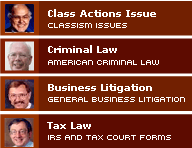
Still, many veterans of those days must feel a sense of betrayal. Was what we stood up for as right - and this applies to those urging obedience to the law and those protesting in the streets - all wrong?
Members of the county school board must feel that the high court has turned its back to its efforts to make classrooms' racial makeup reflect the county's.
Lost among the arguments and counterarguments was the simple fact that the case didn't have to be. Louisville had won national attention in 1956 for voluntarily desegregating its public schools in compliance with Brown vs. Board of Education. It was a token action since housing patterns dictated that neighborhood schools would remain single-race.
By the 1970s, the city's demographics had changed. Housing patterns, in part spurred by urban renewal, had shifted. Louisville's West End, once dominated by ethnic, blue-collar families, became the home for blacks fleeing the inner city and, in many cases, urban renewal's relentless bulldozers. White families moved to the suburban developments springing up across Jefferson County.
A ring of small cities surrounding Louisville blocked the city from annexing the new communities. And the county's sleepy, essentially rural school system found itself scrambling to build schools fast enough to accommodate the influx.
By the early 1970s, it was apparent the Louisville school system was close to the tipping point where the city's remaining white families would flee. The county schools, by contrast, were almost all white. There were a few historically black neighborhoods scattered across the county, most of them in one school district. Both districts became the target of desegregation suits. The Kentucky Commission on Human Rights argued that the districts should be merged.
The city school board then complicated the cases. It bowed to the reality of a shrinking tax base and the threat of white flight and went out of business. The Legislature enacted merger legislation, and the systems, which had little respect for each other, began to try to reconcile their cultures and educational philosophies. U.S. District Judge James Gordon, who was hearing the desegregation suits, gave them breathing room by finding both systems legally desegregated.
But the 6th Circuit Court of Appeals wasn't convinced. Newburg School, serving a historically black community, went through the eighth grade. All other county elementary schools stopped at the sixth grade. It was a vestige of de jure segregation that Judge Gordon acknowledged having had difficulty "writing around" in finding the schools in compliance with Brown.
The case bounced back to Judge Gordon with an order to put a desegregation plan into effect. To help in drafting it, Judge Gordon turned to two young administrators in the city system. They developed a system of school clusters, pairing inner city predominantly black schools with suburban schools. Students were to be transported among the schools according to the first letter of their last name. To achieve racial balance, white students would be bused two years; black students, 10.
Implementation of the plan marred Louisville's image across the country. The ugly pictures from protest marches and rallies showed up on the 6 p.m. news nationwide. The Courier Journal and Louisville Times building at Sixth and Broadway became a favorite target because of our calls for obedience to the law. Reporters and photographers covering the marches and rallies took an undeserved share of the abuse.
To have it end up with the almost flip statement by Chief Justice John Roberts that the "way to stop discriminating on the basis of race is to stop discriminating on the basis of race" is dismissive of centuries of discrimination. It puts down the good-faith efforts by Louisville and thousands of other communities to overcome that past.
Americans of all races deserve better of their highest court.









